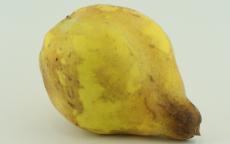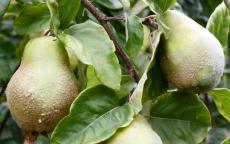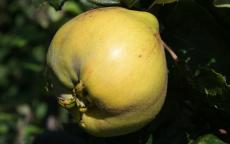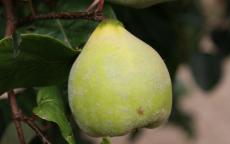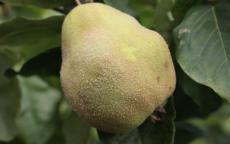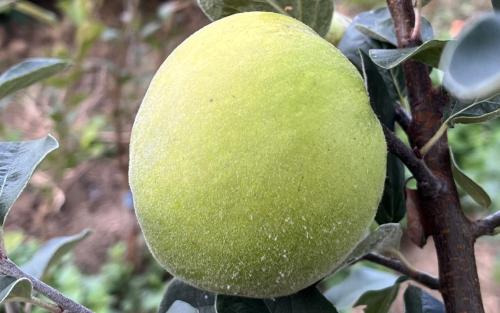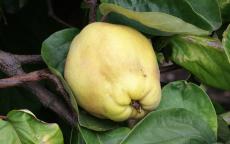Quince trees
Choose from our range of bare-root and pot-grown top quality quince trees.
Aromatnaya
A heavy-cropping Russian quince, for cooking and eating fresh.£64.50buy- Self-fertility: Self-fertile
Bereczki
Bereczki is a traditional eastern European quince variety, ideal for jams and jellies.- Picking season: Late
- Self-fertility: Self-fertile
Champion
A large American quince which does well in the drier parts of the UK.- Self-fertility: Self-fertile
Meech's Prolific
A deservedly-popular quince variety from the USA, fragrant fruit and attractive blossom.£64.50buy- Self-fertility: Self-fertile
- Awards: Slow Food - Ark of Taste
Portugal
Portugal is perhaps the best-flavoured of all Quinces, but prefers a warm dry climate.- Self-fertility: Self-fertile
Serbian Gold
Serbian Gold is probably the best quince variety for the UK climate.£64.50buyBest seller- Self-fertility: Self-fertile
How to choose Quince trees
Quince trees produce are versatile pear-like fruits used for culinary purposes - use them in the same way you would apples or pears. They are particularly good for preserves, and a small amount of stewed quince also gives an interesting lift to many apple-based recipes. The blossom and fruits are very attractive.
The quince originates from south-west Asia, but has been widely grown throughout Europe since classical times, and were introduced to England from France in the 13th century or earlier. The English word "quince" derives from the French word "cognassier". Quinces were also established in the American colonies, and many of today's quince varieties are American.
Quince trees prefer warm climates, as found in central Europe, and much of the USA. They can be grown successfully in most of the milder areas of England, but to get the best yields it really helps to plant them in a sheltered spot in full sun with a south-facing aspect.
Quince trees are usually grown as open-centred bush-style trees, a form which best suits the attractively contorted way in which they tend to grow. They can also be trained as fans (not espaliers) against south-facing walls or fences, and this is a good technique for getting the best cropping and flavour in the UK. Quince trees are generally slow-growing but very long-lived - and the trees become more attractive as they age. The first fruits are borne after 3-5 years.
All our quince trees are grafted on Quince A (semi-vigorous) or Quince C (semi-dwarf) rootstocks. Quinces are clearly related to pears but they produce smaller and more spreading trees than pears, and for this reason pears are usually grafted on to quince rootstocks to produce trees of more manageable proportions.
Quince rootstocks do not tolerate heavy chalk soils.
Quince trees benefit from a general purpose plant food in late winter, and young trees in particular should have a good layer of mulch to suppress weeds and keep the roots moist - they like slightly damp conditions for their roots. If you can provide a sunny sheltered spot with moist soil you should be successful. Quinces are relatively easy to grow, as they are nearly all self-fertile or partially self-fertile, and need minimal pruning.
Quinces should stored in a cool place after picking (preferably with natural light, it does not need to be dark), to allow the fruit to mature and the fragrant flavour to develop - they can be used after a month or so. It is best to store them away from other fruits unless you want them also to pick up the fragrance of the quinces.

